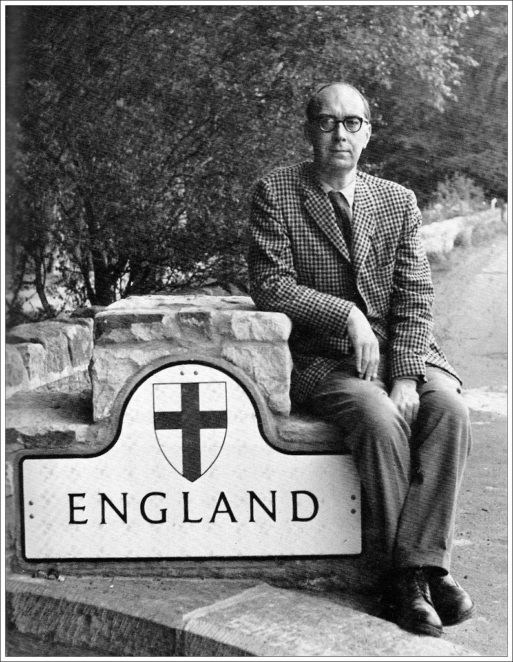
Philip Larkin in 1962
Credit: Simon K via Flickr.com
Philip Larkin (1922-1985) was one of England’s most highly respected post-war poets. Born in Coventry, he earned a BA in English from St. John’s College, Oxford, after which he studied library science, which became his lifelong career. In addition to several collections of poetry, most notably “The Less Deceived” (1955), “The Whitsun Weddings” (1964), and “High Windows” (1974), he wrote several novels, including “Jill,” (1946) and “A Girl in Winter” (1947). But it was his poetry, which X.J. Kennedy described as “a poetry from which even people who distrust poetry….can take comfort and delight,” that garnered him the most praise.
Often referred to by critics and colleagues as “England’s other poet laureate,” Larkin shunned the limelight. Yet, in his eponymous book, “Philip Larkin,” author Alan Brownjohn says Larkin quietly produced “the most technically brilliant, resonantly beautiful, profoundly disturbing yet appealing and approachable body of verse of any English poet in the last twenty-five years.”
Philip Larkin’s 1979 poem “The Mower” is a short but powerful piece about life, death and the importance of caring for one another. It is one of Larkin’s last published pieces of poetry, and like much of his work, it reflects his belief that events from his own life could become meaningful poems. Written in a precise, almost clipped style, it also demonstrates Larkin’s obsession with clarity and rejection of modernistic, obtuse, difficult-to-decipher poems.
“The Mower” begins:
The mower stalled, twice; kneeling, I found
A hedgehog jammed up against the blades,
Killed. It had been in the long grass.
I had seen it before, and even fed it, once.
Now I had mauled its unobtrusive world
Unmendably.
Stark and unapologetic, Larkin’s words describe the unintentional death of the unfortunate hedgehog in the most matter-of-fact terms. The animal was hiding in the grass where the narrator couldn’t see it and died on the mower’s blade. Yet there is connection there too. With the words “I had seen it before….and even fed it, once,” the hedgehog becomes more than just an animal that was in the wrong place at the wrong time. It becomes a sentient being deserving of attention and care. The fact that the narrator has a soft spot for animals becomes apparent here, as well. (Note: according to several sources, this incident actually happened to Larkin, who loved animals, while he was mowing his lawn.)
Then, in the next stanza Larkin shows us the depth of his regret at having taken the hedgehog’s life…
Burial was no help:
Next morning I got up and it did not.
The first day after a death, the new absence
Is always the same;
 Even the life of a hedgehog has meaning, Larkin tells us here. The void left by the death of an unobtrusive little animal is no less immense than the void left by death of a human being. It is “always the same.” He also manages to convey a deep sense of self-recrimination with the statement “I got up, and it did not.” It’s as if he is silently telling us, “and it’s all my fault.”
Even the life of a hedgehog has meaning, Larkin tells us here. The void left by the death of an unobtrusive little animal is no less immense than the void left by death of a human being. It is “always the same.” He also manages to convey a deep sense of self-recrimination with the statement “I got up, and it did not.” It’s as if he is silently telling us, “and it’s all my fault.”
But it’s the last couplet of the poem that conveys its most powerful message…that we need to take more care with the things around us and to treat them as if they matter — because they do. Tragedies happen mostly because we are thoughtless and distracted, and, as “The Mower” teaches us, “after the fact” is too late to make things right.
….we should be careful of each other, we should be kind
While there is still time.”
It’s a message we would all do well to heed.

 “The Mower” by Phillip Larkin
“The Mower” by Phillip Larkin



 Composting Bodies Is Now Legal in a Dozen States
Composting Bodies Is Now Legal in a Dozen States
 “Hand to Earth” by Andy Goldsworthy
“Hand to Earth” by Andy Goldsworthy














